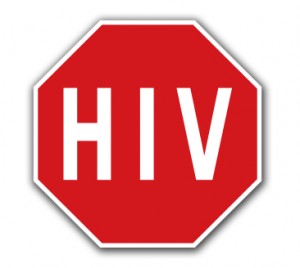Kaiser study finds CDC HIV screening guidelines are still not implemented 8 years later
Main Article Content
Abstract
According to the Centers for Disease Control and Prevention (CDC) roughly 50,000 people become infected with the human immunodeficiency virus (HIV) every year in the United States. About 29,000 of those are men who have sex with men (MSM). [1] Despite this fact, a recent study by the Kaiser Family Foundation found that 56% of gay and bisexual men surveyed have never had discussions about testing for HIV with their doctors, and 27% had never been tested at all. [2]
In 2006 the CDC published guidelines for HIV testing that recommended opt-out HIV testing for everyone aged 13-64 years, in all health-care settings. [3] Opt-out testing allows patients to decline testing, yet assumes consent. This would effectively make HIV testing a routine part of health care much like screening for other treatable diseases. The CDC published these guideline to increase uptake in screening, and because the method of only offering screening to at-risk populations was not practical, nor was it effective. [3]
The problems surrounding HIV testing stem from the early association and stigmatization of the virus with gay sexual activities, intravenous drug users, and immigrant populations. Because there was no effective treatment available until 1987, and because of uncertainty about transmission, the fear of acquired immunodeficiency syndrome (AIDS) in the 1980s caused people afflicted with the disease to be fired from their jobs, evicted from their homes, and ostracized by their communities. [4]
This intense stigma of people with HIV caused public health officials and legislators to approach HIV testing with increased sensitivity. As a result AIDS control efforts were unique, and unlike any other public health measures in the past. For example in New York State, the HIV testing laws allowed for anonymous testing (making surveillance of case incidence impossible), and also made it illegal to compel anyone to get tested, including individuals convicted of assault or battery where victims were exposed to blood or semen. [5]
Although much has changed in the way of stigma towards homosexuals since the late 1980s and early 1990s the most common approach to dealing with AIDS has not changed much in 25 years [6] as exemplified by the Kaiser survey findings.
The results of the survey indicate that screening is not offered as an opt-out test within routine care as per the CDC guidelines. Even more problematic, is that screening is not being offered to the majority of men in high-risk groups (i.e., MSM). This fact is troubling for numerous reasons, primary of which is that asymptomatic individuals can still spread the virus through fluid exchange. Symptoms may not appear for many years after infection.
In a New York Times blog, Jen Kates, Kaiser’s director of global health and HIV policy stated, “in general, providers are uncomfortable talking about sex.” [2] If health-care settings implement the CDC guidelines, discomfort would be much less of an issue and HIV testing would become a routine test within the standard of care. In effect, this would de-stigmatize the test itself, the disease, and at-risk populations.
References:
[1] Centers for Disease Control and Prevention. “HIV in the United States: At A Glance.” Last updated December 3, 2013, http://www.cdc.gov/hiv/statistics/basics/ataglance.html
[2] “More Than Half of Gay and Bisexual Men Say a Doctor Has Never Suggested HIV Testing,” New York Times: The Upshot Blog, September 25, 2014. Accessed: September 29, 2014, http://nyti.ms/1sutaIF
[3] Centers for Disease Control and Prevention. “Revised Recommendations for HIV Testing of Adults, Adolescents, and Pregnant Women in Health-Care Settings.” Last reviewed September 12, 2006, http://www.cdc.gov/mmwr/preview/mmwrhtml/rr5514a1.htm
[4] Shilts R. And the Band Played On: Politics People, and the AIDS Epidemic. New York: St. Martin’s Press, 1987.
[5] New York State Public Health Law Article 27-F § 2781-2782.
[6] Frieden TR, Das-Douglas M, et al. “Applying Public Health Principles to the HIV Epidemic.” The New England Journal of Medicine 353 (2005): 2397-2402.

